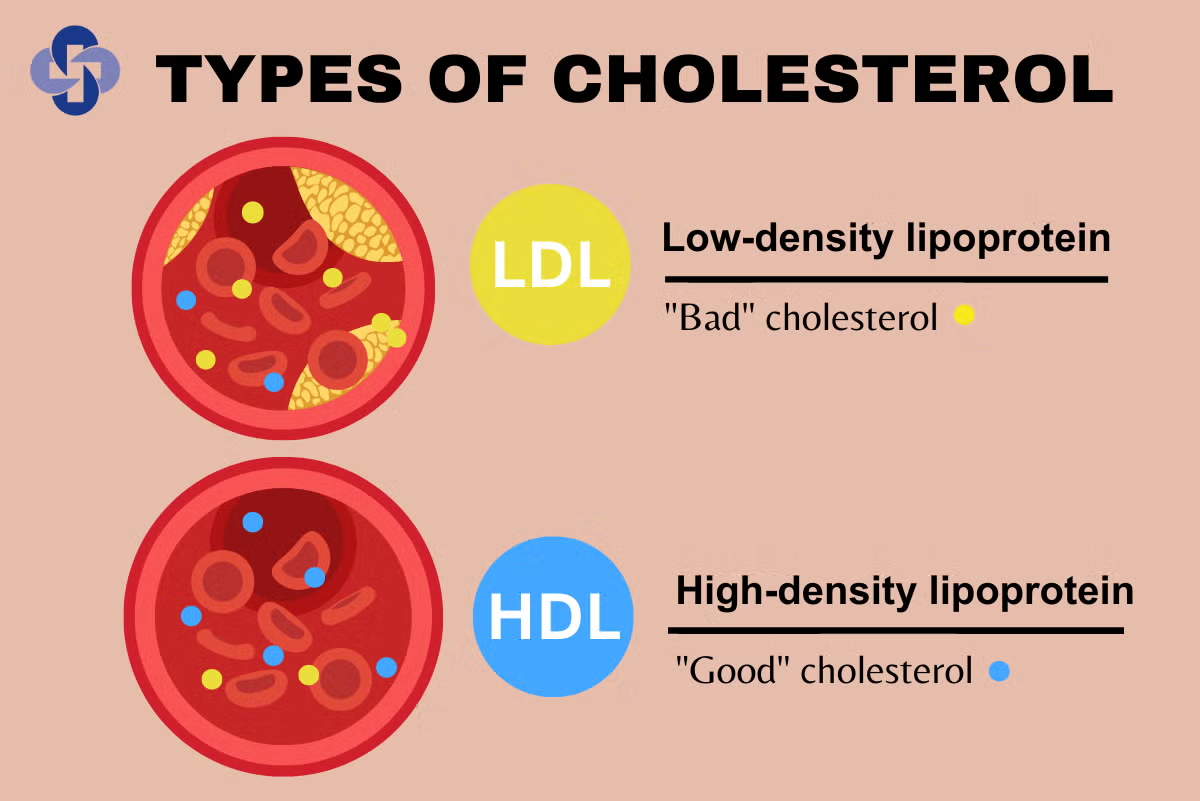Introduction
Cholesterol is a fatty substance found in your blood that is essential for building healthy cells. However, high levels of low-density lipoprotein (LDL) cholesterol, commonly known as “bad cholesterol,” can increase the risk of heart disease and stroke. The good news is that with the right lifestyle changes, you can reduce your cholesterol levels in as little as 30 days. This guide provides evidence-based strategies to lower cholesterol naturally and effectively.
Understanding Cholesterol: LDL vs. HDL
- LDL (Low-Density Lipoprotein): Often referred to as “bad cholesterol,” LDL contributes to plaque buildup in the arteries, leading to atherosclerosis and an increased risk of cardiovascular disease.
- HDL (High-Density Lipoprotein): Known as “good cholesterol,” HDL helps transport excess cholesterol to the liver for elimination, reducing the risk of heart disease.
1. Improve Your Diet
Increase Soluble Fibre Intake
Soluble fibre binds cholesterol in the digestive system, preventing its absorption into the bloodstream.
- Sources: Oats, barley, beans, lentils, fruits (apples, pears, citrus), vegetables (broccoli, Brussels sprouts), flaxseeds.
- Recommended Daily Intake: 25–30g of total fibre, with at least 10g from soluble fibre (Harvard T.H. Chan School of Public Health, 2021).
Eat More Healthy Fats
Replacing saturated and trans fats with healthy fats can improve cholesterol levels.
- Monounsaturated Fats: Found in olive oil, avocados, and nuts (almonds, cashews, peanuts).
- Polyunsaturated Fats: Found in fatty fish (salmon, mackerel, tuna), flaxseeds, and walnuts.
- Omega-3 Fatty Acids: Reduces triglycerides and improves heart health (American Heart Association, 2022).
Reduce Saturated and Trans Fats
- Sources of Saturated Fats: Red meat, full-fat dairy, butter, and palm oil.
- Trans Fats: Commonly found in processed foods, margarine, and baked goods.
- Limit Intake: Reduce saturated fat intake to less than 10% of daily calories (World Health Organization, 2022).
2. Increase Physical Activity
Engage in Regular Exercise
Exercise boosts high-density lipoprotein (HDL) cholesterol while lowering LDL and triglycerides.
- Recommended Routine:
- Aerobic Exercise: 150 minutes per week of moderate-intensity exercise (brisk walking, cycling, swimming) or 75 minutes of vigorous activity (running, HIIT workouts).
- Strength Training: At least twice a week (Mayo Clinic, 2023).
- Daily Movement: Simple activities such as taking the stairs, walking instead of driving, and standing more can contribute to overall cardiovascular health.
3. Maintain a Healthy Weight
Lose Excess Weight
Even a modest weight loss can significantly improve cholesterol levels.
- Studies Suggest: Losing 5–10% of body weight can reduce LDL cholesterol by 5–15% (National Institutes of Health, 2023).
- How to Achieve This:
- Reduce calorie intake with portion control.
- Avoid sugary drinks and refined carbs.
- Incorporate more lean proteins and fibre-rich foods into meals.
4. Avoid Smoking and Limit Alcohol Intake
Quit Smoking
Smoking lowers HDL cholesterol and damages blood vessels, making it easier for cholesterol to accumulate.
- Benefits of Quitting:
- Within 20 minutes: Heart rate and blood pressure drop.
- Within 3 months: Circulation and lung function improve.
- Within a year: Risk of heart disease drops by 50% (Centers for Disease Control and Prevention, 2023).
Limit Alcohol Consumption
Excessive alcohol consumption increases cholesterol and triglyceride levels.
- Guidelines:
- Men: No more than two drinks per day.
- Women: No more than one drink per day (National Institute on Alcohol Abuse and Alcoholism, 2023).
5. Consider Natural Supplements
Plant Sterols and Stanols
Plant sterols and stanols reduce cholesterol absorption in the intestines.
- Sources: Fortified foods (margarine, orange juice, cereals), nuts, and seeds.
- Recommended Dose: 2g per day can lower LDL cholesterol by 10% (European Journal of Nutrition, 2021).
Psyllium Husk
Psyllium is a soluble fibre that lowers LDL cholesterol by binding to bile acids.
- Dosage: 5–10g per day (Journal of the American College of Nutrition, 2021).
Red Yeast Rice
Contains monacolin K, which is similar to statins used to lower cholesterol.
- Warning: Consult a doctor before use as it may interfere with medications (FDA, 2023).
6. Manage Stress
Reduce Chronic Stress
Stress can raise cholesterol levels indirectly by increasing unhealthy eating habits and weight gain.
- Effective Stress Management Techniques:
- Mindfulness & Meditation: Reduces cortisol levels.
- Deep Breathing Exercises: Lowers blood pressure.
- Regular Physical Activity: Acts as a natural stress reliever (American Psychological Association, 2023).
7. Monitor Your Cholesterol Levels
Regular cholesterol testing helps track progress and determine if additional interventions are needed.
- Recommended Frequency:
- Adults over 20: Every 4–6 years.
- High-risk individuals: Annually (American College of Cardiology, 2023).
- Target Cholesterol Levels:
- Total Cholesterol: Below 200 mg/dL.
- LDL Cholesterol: Below 100 mg/dL (optimal), below 70 mg/dL for high-risk individuals.
- HDL Cholesterol: Above 60 mg/dL (National Cholesterol Education Program, 2023).
Conclusion
Reducing cholesterol in 30 days requires a combination of dietary changes, physical activity, weight management, and healthy lifestyle habits. By following these evidence-based recommendations, you can lower your LDL cholesterol and improve overall cardiovascular health. Regular monitoring and consultations with a healthcare provider will ensure sustained progress and long-term heart health.
References:
- Harvard T.H. Chan School of Public Health. (2021). Nutrition Source.
- American Heart Association. (2022). Cholesterol Guidelines.
- World Health Organization. (2022). Healthy Diet.
- Mayo Clinic. (2023). Exercise and Heart Health.
- National Institutes of Health. (2023). Weight Loss and Cholesterol.
- Centers for Disease Control and Prevention. (2023). Benefits of Quitting Smoking.
- National Institute on Alcohol Abuse and Alcoholism. (2023). Alcohol and Heart Health.
- European Journal of Nutrition. (2021). Plant Sterols and Cholesterol Reduction.
- FDA. (2023). Red Yeast Rice and Cholesterol.
- American College of Cardiology. (2023). Cholesterol Monitoring Guidelines.

Leave a Reply